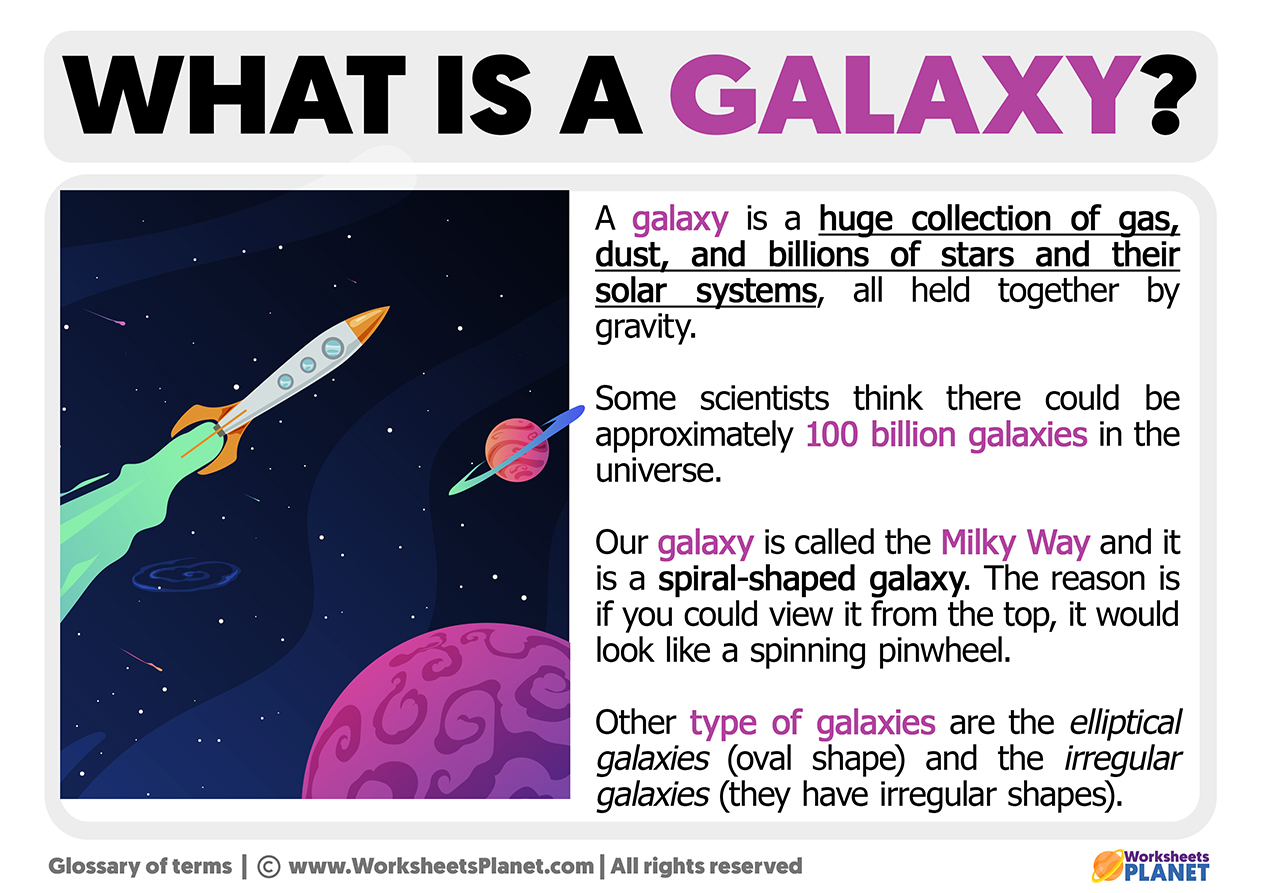A galaxy is a vast collection of stars, gas, stardust, and dark matter bound together by their gravity. There are more than 100 billion galaxies in the Universe, and they all show beautiful structures that can be seen in images taken through telescopes.
What we see in these images representing a typical galaxy is mainly the bright part. These stars are embedded in a much larger halo of dark matter that extends farther, sometimes interacting with other galaxies.

Dark matter provides most of a galaxy’s mass, holding everything together thanks to gravity. But stars also shape a galaxy: their radiation drives matter around, and when stars die in supernovae, they also spread material much farther.
Almost all the galaxies we have studied have a supermassive black hole at their core. This black hole also influences the characteristics of the galaxy. When the black hole feeds on the gas and dust surrounding it, it consumes so much matter that it can reduce star formation. The gas and dust that would form new stars fall into the interior of the supermassive black hole. This is why star formation is uneven in different regions of the galaxy.
Galaxies can also form progressively due to merger processes with other galaxies, as in the case of the collision recorded by the Hubble telescope called Arp 143 in the distorted triangle-shaped star-forming spiral galaxy NGC 2445 on the right, along with its less conspicuous companion, NGC 2444 on the left.
Types of galaxies in the Universe
Currently, scientists continue to study the formation and evolution of the different types of galaxies. We send telescopes into space like the Hubble or the James Webb trying to observe the most distant and oldest galaxies in the Universe and thus be able to know more about them.
The smallest galaxies can contain millions of stars, while the largest can contain up to billions. According to Hubble’s gallows diagram, they can be divided into:
Spiral galaxies
Spiral galaxies have a flat disk and large luminous arms and tend to be made up of young population of stars with little gas and little stellar dust.
Barred spiral galaxies
Its shape is flat with a disk-shaped spiral pattern, a central bulb, and usually two arms. They have a bar of stars that crosses the entire diameter of the galaxy and from which arms extend.
Elliptical galaxies
They are galaxies characterized by an ellipsoidal shape and very few distinctive features, such as arms.
Irregular galaxies
Irregular galaxies does not have any type of structure or defined symmetry, nor when stretched does it fit into the Hubble sequence. They are smaller galaxies formed by a large amount of interstellar gas and dust.

